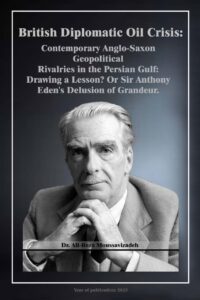The British Imperial Establishment, Post Imperial Era, and the ‘Churchillian’ World View, 1945-2016. (Adjustments & Challenges in Contemporary British Diplomatic Strategy)
95
defeated.”35 Indian loyalty turned by 1916 into a renewal of demands for
self-
rule. This eventually led to a situation in which “provincial legislatures had
their
elective elements enlarged and provincial governments were to be appointed on
the principle of
dyarchy whereby European ministers retained certain vital
portfolios (police, justice and land revenue),
while Indian ministers became
responsible for departments like education, public health and public works.
A
central legislature of 146 members was also created. Although central
government remained
authoritarian, semi-democracy had come to the
provinces.”36
However, as a result of the tragic massacre at Amritsar in 1919 and the
Rowlatt Acts with their
repressive provisions against sedition, Indian nationalists
found it hard to treat the new measures with
open mindedness. On the other hand,
as we saw in Chapter two, once again the Dominions attempted to
assert their
national needs. In the Imperial War Conference of 1917 the Dominion leaders
pressed for
an Imperial Conference after the war so that the constitutional
relations of the self-governing empire
could be adjusted; in other words, to
explain the Dominion status in realistic terms. The Dominion’
later demand was
to be admitted as independent nations to the Peace Conferences and to be allowed
to
sign the peace treaties in their own right. Thus, the Dominions were represented
as separate nations at
the Peace Conferences and of course at the same time being
part of the British Empire delegations. Also,
India was able to sign the treaties in
her own right. So, by 1919, “the Dominions had been seen to
‘come of age’ – both
in a practical and in a diplomatic sense – something which Lloyd
George’s
decision to treat them (and India) as equal at the 1917 Imperial Conference
had
ensured.”37 Additionally, the acquisition of mandated
territories in the case of
Australia, New Zealand and South Africa and the membership pf the League
of
Nations in the case of the Dominions was further proof of Lloyd George’s
decision at the
Imperial Conference in 1917.
Pages: 1 2 3 4 5 6 7 8 9 10 11 12 13 14 15 16 17 18 19 20 21 22 23 24 25 26 27 28 29 30 31 32 33 34 35 36 37 38 39 40 41 42 43 44 45 46 47 48 49 50 51 52 53 54 55 56 57 58 59 60 61 62 63 64 65 66 67 68 69 70 71 72 73 74 75 76 77 78 79 80 81 82 83 84 85 86 87 88 89 90 91 92 93 94 95 96 97 98 99 100 101 102 103 104 105 106 107 108 109 110 111 112 113 114 115 116 117 118 119 120 121 122 123 124 125 126 127 128 129 130 131 132 133 134 135 136 137 138 139 140 141 142 143 144 145 146 147 148 149 150 151 152 153 154 155 156 157 158 159 160 161 162 163 164 165 166 167 168 169 170 171 172 173 174 175 176 177 178 179 180 181 182 183 184 185 186 187 188 189 190 191 192 193 194 195 196 197 198 199 200 201 202 203 204 205 206 207 208 209 210 211 212 213

